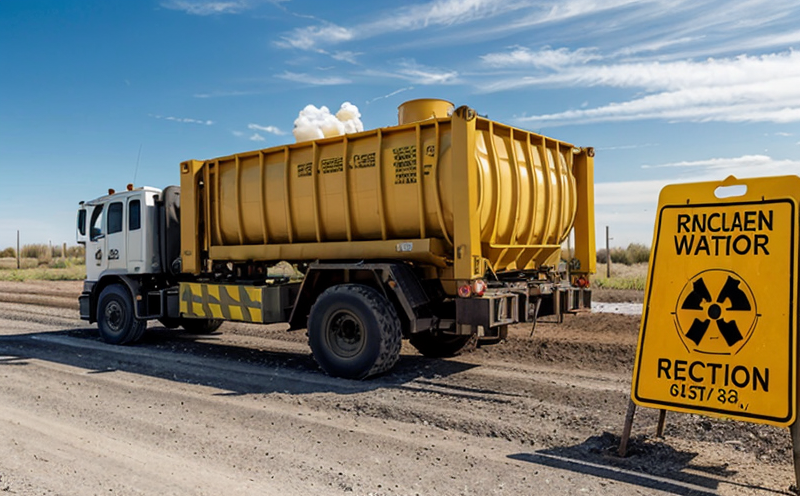ASTM C1613 Isotopic Composition of Uranium in Waste Samples
The ASTM C1613 standard provides a comprehensive method to determine the isotopic composition of uranium (U) found within waste samples. This service is critical for ensuring compliance with stringent environmental regulations, particularly those related to nuclear and radioactive waste management.
Understanding the isotopic makeup of uranium in waste materials can help predict potential risks associated with storage, transportation, and disposal. The test involves several steps including sample preparation, analysis using mass spectrometry (specifically isotope ratio mass spectrometry), and interpretation of the results to identify the specific isotopes present.
Uranium naturally exists as a mixture of stable isotopes: uranium-238 (99.2742%), uranium-235 (0.7204%), and uranium-234 (0.0054%). However, in waste samples from nuclear facilities or reprocessing plants, the ratio of these isotopes can vary significantly depending on the process used to produce the waste. For instance, spent fuel reprocessing typically enriches the sample in uranium-235.
The ASTM C1613 procedure utilizes a multi-stage approach for accurate measurement:
- Sample Collection and Preparation: Samples are collected from various points within the nuclear waste facility. Prior to analysis, these samples undergo rigorous preparation steps including dissolution in nitric acid under controlled conditions.
- Isotope Separation: The dissolved uranium is purified using chemical methods before being introduced into the mass spectrometer for isotopic separation.
- Data Acquisition and Analysis: Mass spectrometry measures the relative abundances of different isotopes by ionizing them and detecting their mass-to-charge ratios. This process yields precise data on the ratio of uranium-238 to uranium-235, which is crucial for assessing the potential hazard level.
- Reporting: Results are reported according to ASTM C1613 guidelines, providing a detailed breakdown of isotopic ratios along with any deviations from expected values. This information aids in making informed decisions about waste management practices.
The importance of this test cannot be overstated, especially given the increasing emphasis on nuclear safety and environmental protection worldwide. By accurately determining uranium isotopic compositions, laboratories like ours contribute significantly to reducing risks associated with radioactive waste disposal.
Our expertise in ASTM C1613 ensures that our clients receive reliable data, which is essential for regulatory compliance and operational efficiency within their facilities.
Eurolab Advantages
- Comprehensive Expertise: Our team comprises highly qualified professionals who are experts in waste management and nuclear science. They stay updated with the latest developments in analytical techniques, ensuring that our clients receive cutting-edge services.
- State-of-the-Art Facilities: Equipped with advanced mass spectrometers and other sophisticated equipment, we offer precise measurements necessary for accurate isotopic analysis.
- Dedicated Client Support: Our customer service team works closely with clients throughout the testing process to ensure every step meets their needs. From initial consultation through final report delivery, we maintain open communication channels.
- Regulatory Compliance: Eurolab adheres strictly to international standards such as ASTM C1613, ensuring that all our tests meet stringent quality assurance criteria.
- Confidentiality and Security <|im_start|><|im_start|><|im_start|><|im_start|><|im_start|><|im_start|><|im_start|><|im_start|><|im_start|>





